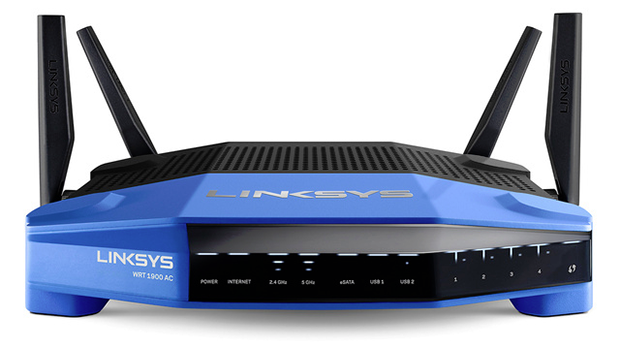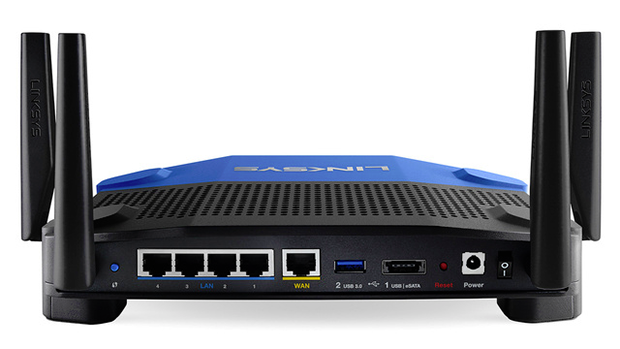 Linksys unveiled its latest 802.11 ac router at CES 2014. While the the Linksys WRT1900AC Dual Band Wi-Fi Router pays homage to the venerable Linksys WRT54G, one of the best-selling routers of all time, with its black and blue stackable design, it is a completely different beast under the hood.
Linksys unveiled its latest 802.11 ac router at CES 2014. While the the Linksys WRT1900AC Dual Band Wi-Fi Router pays homage to the venerable Linksys WRT54G, one of the best-selling routers of all time, with its black and blue stackable design, it is a completely different beast under the hood.
Supporting simultaneous dual-band (2.4GHz and 5GHz), the WRT1900AC comes with a dual-core 1.2GHz processor, 256MB of DDR3 RAM, 128MB of flash memory, four removable antennas (allowing for antenna upgrades to improve signal and range) and eSata and USB 2.0/3.0 connectivity ports.
“Our new Linksys WRT1900AC Wireless Router will be the most powerful router in its class on the market. We have spared no technology expense to make this router a prosumers’ dream,” said Mike Chen, vice president product management for Linksys. “The launch of the new WRT router is not only a celebration for the Linksys brand but for our customers too. We have brought back the WRT because our customers have asked for a router that had the reliability, functionality and open source capabilities but with today’s AC wireless technology. The WRT1900AC is the result of all these requests.”

In another homage to the WRT54G, Linksys will offer the OpenWRT community support to ensure that their open source firmware supports the WRT1900AC by providing both hardware as well as SDKs/APIs. By the time it launches, an OpenWRT custom firmware should be available for download.
Linksys has also updated its Smart Wi-Fi app for the WRT1900AC with a new feature called Network Map. This graphical tool provides a visual topology map that shows all devices connected to the network. Clicking on a device icon lets users manage settings such as parental control settings and wireless bands and even remove it from the network.
The Linksys Smart Wi-Fi 1900AC Dual-Band Wireless-AC Router will go on sale this spring for US$299.99.
Source : Linksys
